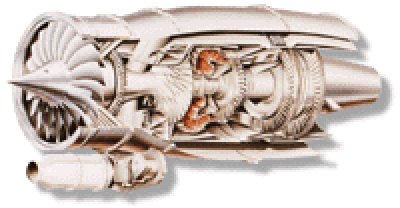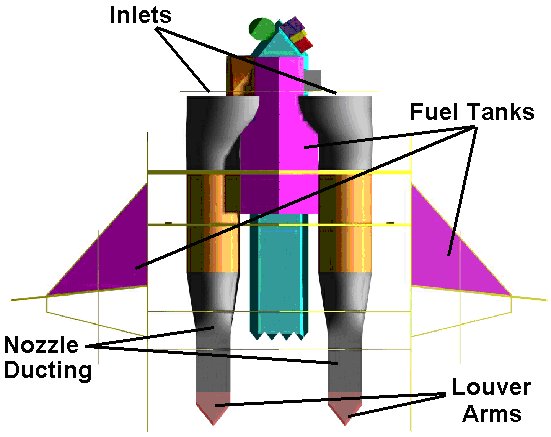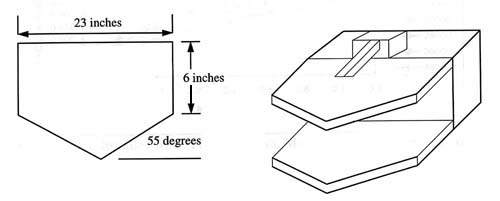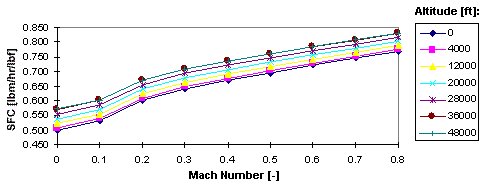|
||||||||||
|
|
||||||||||
|
||||||||||
|
|
||||||||||
|
|
|
||||||||||||||||||||||||||||||||||||||||||||||||
|
Engine:The Storm Shadow uses two FJ44-2A high bypass turbofan engines (shown below) made by Williams International, a division of Rolls-Royce.

Williams FJ44-2A engineThe RFP calls for the aircraft to use an off-the-shelf commercial jet engine. Engines that could possibly be used include turbojets, turbofans, turpoprops, and engines with afterburners. Because they are not typically flown at speeds approaching Mach 0.9 and they have large radar cross-sections, turboprops were quickly eliminated. Initial sizing showed that turbojets would require too much fuel to be practical. Afterburners were eliminated because of their extreme length. This left the turbofan, which comes in both low and high bypass varieties. While the low bypass is capable of greater thrust at low altitudes, its fuel consumption was considered too great. The high bypass turbofan, however, is much more fuel efficient. Since range is very important to the mission requirements in the RFP, the high bypass engine was finally selected. The performance of five candidate engines are listed in the table below.
Engine Trade Study
Because of its high SFC (a measure of fuel consumption), the JT15D-5D was quickly eliminated. The FJ44-1A was found to be incapable of achieving the performance requirements called for in the RFP, and was also eliminated. The PW545A was too heavy, and the PW530A too long. The FJ-44A was selected because it offers the best compromise between low fuel consumption, small size, and good thrust to weight ratio. The FJ44-2A has also proven itself in many commerical aircraft including the Cessna Citation Excel and the Raytheon Primary One business jet. Military aircraft such as the Dark Star also use this engine.
Engine/Inlet Location:Since the engines are large, concentrated masses, their location was largely dictated by center of gravity and stability issues. The inlet is an S-ducted pitot inlet. S-ducting was used primarily for stealth as it allows the radar reflective fan blades to be hidden. As a result, 90% of the fan blades are hidden from a head on view. The layout of the propulsion system is indicated below.

Engine, inlet, and fuel tank locations
Nozzle Configuration:The aircraft uses 2-D thrust vectoring nozzles to increase maneuverability and assist in pitch control. The dimensions of the nozzle louver arms are shown below.

Nozzle configuration
Engine Performance:Since very little actual performance data for the FJ44-2A engine was provided by the manufacturer, similar engines for which such data was available were used to create a model. Using this model and analytical methods, the following engine performance predictions were made.

Projected installed full throttle thrust vs. Mach number at various altitudes

Projected installed max power SFC vs. Mach number at various altitudes

Projected installed cruise SFC vs. altitude at various Mach numbers
Fuel System:The FJ44-2A can operate using several types of fuel: Jet A, JP4 through JP8 and (for 50 hours in emergency situations) 100LL. As shown in the internal configuration, fuel is carried in the wings and above the bomb bay. The tanks are composed of self-sealing fuel bags to minimize leaking and fire from combat damage. A fourth drop tank is carried within the bomb bay during the ferry mission. A fuel dump system is included for emergency landings with exit points located at the wing tips. |


|
Aircraft | Design | Ask Us | Shop | Search |

|
|
| About Us | Contact Us | Copyright © 1997- | |||
|
|
|||